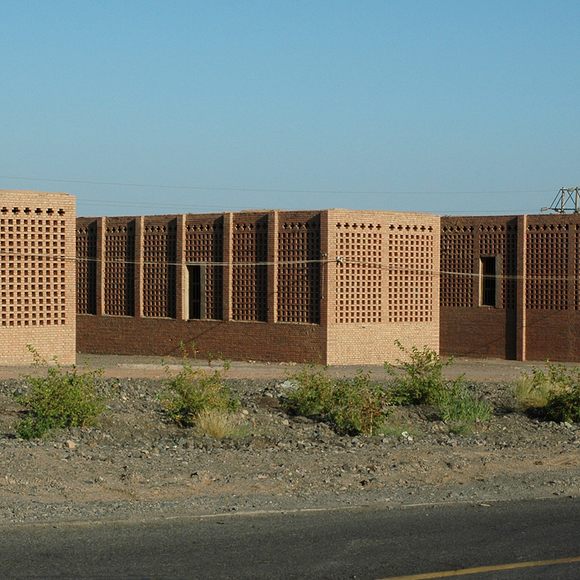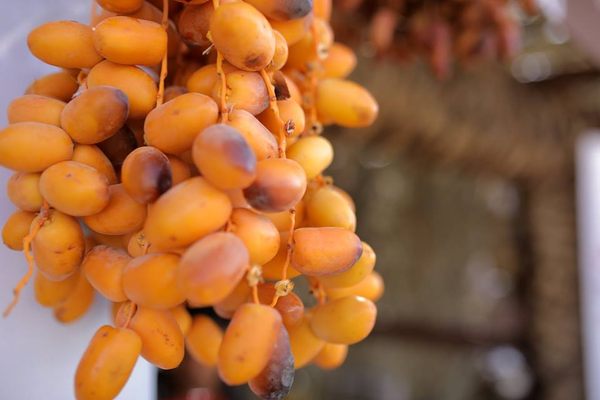Drying seedless, white grapes (sultanas) in the sun creates brown-purple raisins, while drying the exact same fruit using wind yields yellow-green raisins. Farmers in China’s Turpan desert rely on chunches—petite, hole-filled buildings—to produce sweet, juicy, yellow-green sultanas. In fact, Turpan is the largest producer of air-dried raisins in the world.
Chunches are synonymous with the landscape of Turpan. Grape-growers build the adobe brick units in elevated, open areas, making sure all four walls contain small openings. These allow the hot desert wind to pass through and evaporate the moisture from the grapevines that hang within the dark interior. After about 40 days, the chunche is filled with green raisins (this excludes the grapes that fall off the vines; those are removed from the chunche and sun-dried into the dark variety).
The Uyghurs grow millions of these sweet morsels every year. This Turkic ethnic group seized the Turpan basin from the Tibetans in 803 CE, then built an intricate underground irrigation system called the karez (meaning “well”) that brought water and, in turn, thriving agriculture, to the region.
Nicknamed “Fire Land,” the northwestern city offers extreme desert heat and a low altitude, perfect for growing and drying grapes. Its capacities are so famous that some producers who buy cheaper grapes elsewhere will bring them to Turpan just to dry them. This stellar reputation isn’t a new development: In the 1800s, a Russian traveler named Grigory Grumm-Grzhimaylo deemed Turpan’s raisins “the best in the world,” referring to its chunches as “drying houses of a completely peculiar type.”
Written By
 rachelrummel
rachelrummel
Sources
- gain.fas.usda.gov/Recent%20GAIN%20Publications/Dried%20Fruit%20Annual%202009_Beijing_China%20-%20Peoples%20Republic%20of_2-4-2010.pdf
- munchies.vice.com/en_us/article/nzkd8w/how-one-of-the-worlds-hottest-cities-became-a-hub-for-grape-growing
- www.advantour.com/china/turpan.htm
- www.bbc.com/travel/story/20170307-an-ancient-oasis-in-chinas-remote-desert
- books.google.com/books?id=FDdRDAAAQBAJ&pg=PA108&dq=turfan+803&hl=en&sa=X&ved=0ahUKEwjAv6yYvuDZAhUozlkKHRvwAZMQ6AEILDAB#v=onepage&q=turfan%20803&f=false














